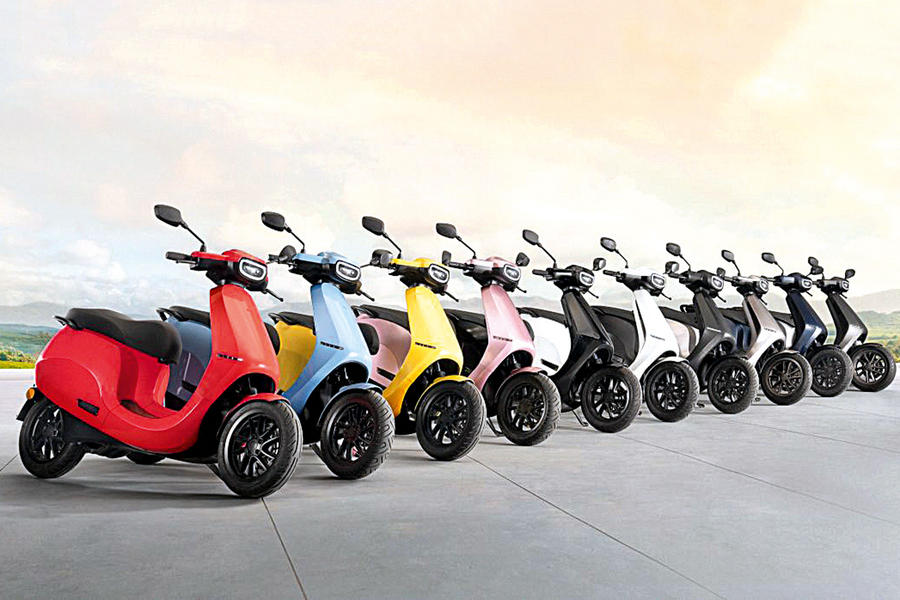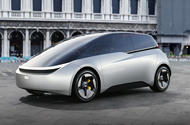Ola shared preview image of its first car in January
Indian firm’s ambitious plan is to introduce a range of premium cars and scooters
Indian start-up Ola Electric will introduce a range of vehicles in the UK by 2025, following the rapid roll-out of its first product, the S1 scooter, in its home market.
Alongside the ‘premium’ S1, Ola will offer a cheaper scooter and a car in the next three years, both in the UK and other markets globally.
Its longer-term plans include a number of four-wheel vehicles, stretching from those that “address urban use scenarios” to others that “have greater [driving] ranges and greater capabilities”, explained design chief Wayne Burgess.
The Brit, who in a previous role at Jaguar worked on cars including the F-Type and XF, is leading Ola’s designers both at its headquarters in Bangalore and at the technical centre in Coventry that was opened in January.
The firm said it will invest £100 million over the next five years into the Warwickshire site, employing more than 200 automotive designers and engineers.
Best known for its ride-hailing and food delivery service, Ola is now aiming to revolutionise the EV market by making it accessible to all.

Marketing boss Varun Dubey said: “There are three things an Ola product must have: the best design in its category, the best technology – for example, the S1 comes with cruise control – and the best performance.
“Our vision is to be a global EV company, and our timing ambitions are fast. We started in 2016, before it was cool to be electric. We started trying to understand swappable batteries and a bunch of other experiments.
“From there, we learned that if you want to do this really well, you need to look at the big picture. Outside of North America, the rest of the world moves on two wheels. But the world of electric mobility isn’t going to be monolithic. You might own a two-wheeler or a car, or both, or use a ride-hail [service] sometimes.”
Ola will build cars at a different site to its scooter factory, where its first vehicle was built only 10 months after the land was acquired. Dubey confirmed this will be in India.
While the Indian and UK markets are very different, Ola vehicles won’t be targeted at the budget end of the British market.
“We’ve found that as long as you provide the right value to customers, they’re willing to provide the right price, which may not be the lowest price,” said Dubey. “That’s what we’ve done with the S1 and what we will do across the board.
“[Our products] are right up there with the best in the world in terms of quality.”

Q&A: Wayne Burgess, Design Vice-President, Ola Electric
Why set up in Coventry?
“Look at the other brands here: there’s Tata, there’s Mahindra. To achieve our goals, we need to leverage all the experience that’s here, and [CEO] Bhavish Aggarwal was very receptive to that. “If you look at Formula 1 and Formula E teams, almost all of them are within a 50- mile radius. It’s good to have a presence.”
What are you designing?
“It’s about first principles. What’s the best way to get out of a vehicle? It isn’t having a B-pillar. We’re forgetting about engineering challenges. What’s the best way for a customer to wipe a windscreen? Do you need to touch anything any more? Does the car need to know it’s you? Those kinds of things will give us a point of difference, and we will commit to solving these problems in our products.”
Why did you join Ola?
“The whole relationship with mobility solutions is changing, and one of the things that attracted me to Ola is that it already has this app-based ecosystem. You can ride-hail, you can order food [in India]. It might sound unusual for a car designer to say, but the actual transport device has moved down the priority scale. Instead, it’s about the way you engage with the ecosystem, the user experience. That’s our competitive advantage, as it’s where we’ve come from.”
Source: Autocar
